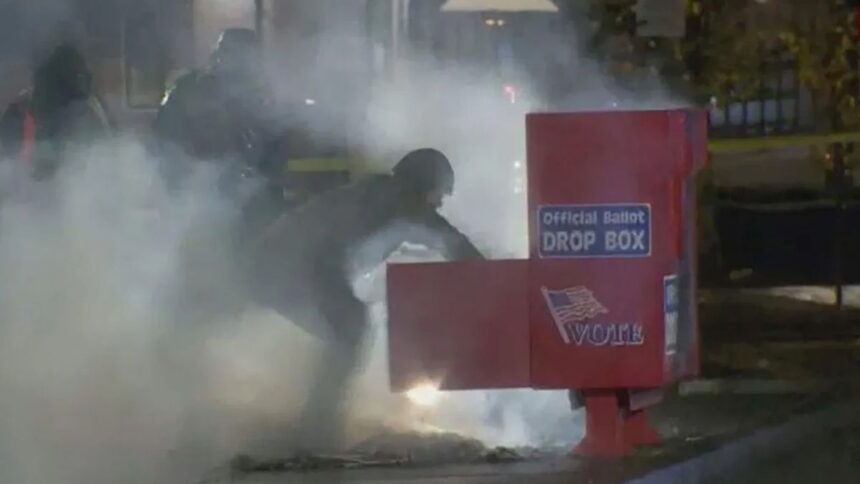The FBI has announced a $25,000 reward for information leading to the capture of a suspect linked to a series of ballot box fires in Washington and Oregon.
The arson incidents, which occurred just weeks before the Nov. 5 presidential election, have raised concerns over election security and potential voter suppression in the Pacific Northwest.
The Timeline of Ballot Box Arson Incidents
The initial wave of ballot box fires was reported on Oct. 8, affecting two drop-off locations in Vancouver, Washington.
Law enforcement soon began to suspect a coordinated effort when, on Oct. 28, more fires were set at additional ballot boxes in Vancouver and Portland, Oregon. These incidents came during a critical period as ballots were being distributed to voters in the region.
Surveillance footage released by the FBI shows a male suspect driving what appears to be an early-model Volvo S-60 sedan. The video captures the individual approaching a ballot box, lighting an incendiary device, and placing it onto the box before quickly leaving the scene.
Moments later, smoke and flames can be seen engulfing the ballot box. The authorities have identified key details about the suspect’s vehicle: a 2003 or 2004 Volvo missing its front grille logo and displaying a counterfeit temporary Washington license plate.
Suspect Profile and Investigation Details
Investigators describe the suspect as a white male, believed to be between 30 and 40 years old, with thinning hair. There is also speculation that he may have skills in metal fabrication or welding, given the nature of the incendiary devices used in these attacks.
While the suspect’s motives remain unclear, pro-Palestinian messages were found on the devices involved, reading “Free Gaza.” This has prompted questions regarding the intent behind the acts, whether they were politically motivated or aimed at disrupting the electoral process.
The pattern of the arson incidents further suggests careful planning. On Oct. 28, authorities reported that a ballot box in Portland caught fire around 3:30 a.m., followed by another in Vancouver just 30 minutes later.
The distance between these two locations, approximately 15 miles, indicates that the suspect might have been familiar with the area and had a predetermined route.



